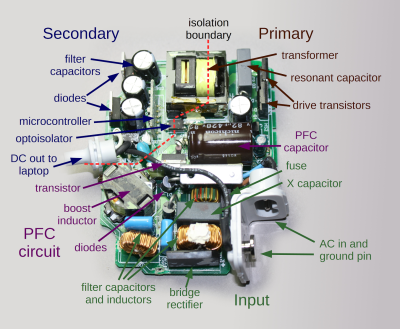CSL Dualcom, a popular maker of security systems in England, is disputing claims from [Cybergibbons] that their CS2300-R model is riddled with holes. The particular device in question is a communications link that sits in between an alarm system and their monitoring facility. Its job is to allow the two systems to talk to each other via internet, POT lines or cell towers. Needless to say, it has some heavy security features built in to prevent  tampering. It appears, however, that the security is not very secure. [Cybergibbons] methodically poked and prodded the bits and bytes of the CS2300-R until it gave up its secrets. It turns out that the encryption it uses is just a few baby steps beyond a basic Caesar Cipher.
tampering. It appears, however, that the security is not very secure. [Cybergibbons] methodically poked and prodded the bits and bytes of the CS2300-R until it gave up its secrets. It turns out that the encryption it uses is just a few baby steps beyond a basic Caesar Cipher.
A Caesar Cipher just shifts data by a numeric value. The value is the cipher key. For example, the code IBDLBEBZ is encrypted with a Caesar Cipher. It doesn’t take very much to see that a shift of “1” would reveal HACKADAY. This…is not security, and is equivalent to a TSA lock, if that. The CS2300-R takes the Caesar Cipher and modifies it so that the cipher key changes as you move down the data string. [Cybergibbons] was able to figure out how the key changed, which revealed, as he put it – ‘the keys to the kingdom’.
There’s a lot more to the story. Be sure to read his detailed report (pdf) and let us know what you think in the comments below.
We mentioned that CSL Dualcom is disputing the findings. Their response can be read here.



 The aim of this challenge is to transform the global food system using sustainable approaches that emulate natural process. Entries must address a problem somewhere in the food supply chain, a term that could apply to anything from soil modification to crop optimization to harvest and storage technologies. Indeed, the 2015 winner in the Student category was for a
The aim of this challenge is to transform the global food system using sustainable approaches that emulate natural process. Entries must address a problem somewhere in the food supply chain, a term that could apply to anything from soil modification to crop optimization to harvest and storage technologies. Indeed, the 2015 winner in the Student category was for a 





 The tablet is based upon an off-the-shelf embedded PC motherboard and touchscreen controller. [Dave] took some offense at the hacked up USB connector on the touchscreen. We have to disagree with [Dave] a bit here, as the video seems to show that a standard mini-b connector wouldn’t have fit inside the tablet’s case. There’s no excuse for the USB cable shield draped over the bare touch controller board though. Things go downhill from there. The tablet’s power supply is best described as a bizarre mess. Rather than use a premade DC to DC converter, whoever built this spun their own switch mode power supply on a home etched board. The etching job looks good, but everything else, including the solder job, is beyond terrible. All the jumps and oddly placed components make it look like a random board from the junk bin was used to build this supply.
The tablet is based upon an off-the-shelf embedded PC motherboard and touchscreen controller. [Dave] took some offense at the hacked up USB connector on the touchscreen. We have to disagree with [Dave] a bit here, as the video seems to show that a standard mini-b connector wouldn’t have fit inside the tablet’s case. There’s no excuse for the USB cable shield draped over the bare touch controller board though. Things go downhill from there. The tablet’s power supply is best described as a bizarre mess. Rather than use a premade DC to DC converter, whoever built this spun their own switch mode power supply on a home etched board. The etching job looks good, but everything else, including the solder job, is beyond terrible. All the jumps and oddly placed components make it look like a random board from the junk bin was used to build this supply.











